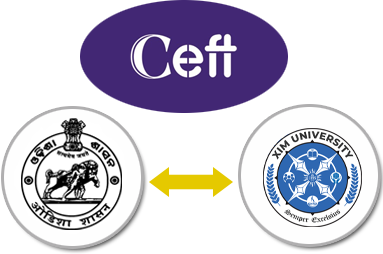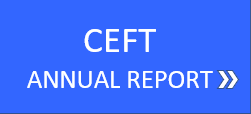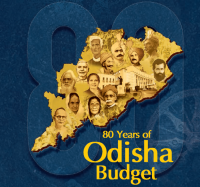STUDIES ON STATE BUDGET ARCHIVE
Study Reports Completed
- Preparation of People’s Guide Annual Budget 2022-23
- Contribution to the Economic Survey of Odisha: 2022-23
- Preparation of Odisha Gender and Child Budget Statement 2022-23
- Preparation of Odisha Nutrition Budget Statement 2022-23
- Preparation of Odisha SDGs Budget Statement 2022-23
- Verification of System generated report of the SDG budget from mapped Chart of Accounts of the previous year
- Mapping and restructuring of schemes and programmes from previous year’s SDG budget and Supplementary Budget.
- Preparation of Mission Shakti’s Budget 2022-23
- Preparation of Mission Shakti Budget Statement outline
- Preparation of the detailed structure of Mission Shakti Budget Statement and presentation of the same for discussion with respective stakeholders.
- Preparation of Odisha Fiscal Strategy Report 2022-23
- Preparation of Odisha Fiscal Risk Statement 2022-23
- Preparation of Handbook on Outcome Budgeting:
- Submitted a comprehensive document outlining the concepts and process of Outcome Budgeting to aid the outcome budgeting exercise carried out by the different departments of the Government of Odisha.
- Submitted a presentation and a one pager on the handbook to the Finance Department
- Study Report on Budgetary Feedback for Departments-wise of the Government of Odisha 2022-23
- Participatory Budget Initiative: Compilation of the Suggestions received from the citizens of Odisha through online modes for the formulation of State Budget 2022-23.
- Preparation of People’s Guide-Supplementary Budget 2021-22
- A note on Expectations from Union Budget 2022-23
- Quick observations on Union Budget 2022 -23
- An Analysis of State-wise Capital Outlay 2021-23
- A note on the Impact of Union Budget FY 2022-23 on Trade and Industry
- An Analysis of State-wise Scheme launched over FY 2016-17 to FY 2021-22 (21 Indian States)
- Budgeting for Children’s Education: Reflections from Odisha and Neighboring States
- Estimation of Public burden for a 10-year extension of Ashirvad Scheme
- Comparative analysis of Gender and Child Budget Statements of Odisha with other Indian states
- Child, Gender and Nutrition Budget Documents/Statements:
- Preparation of document outline
- Verification of System generated reports of the three budgets from mapped Chart of Accounts of the previous year
- Mapping of new schemes and program from Supplementary budget under Gender, Child and Nutrition categories
- Restructuring of previous year’s Nutrition, Gender and Child Budget statements
- Submitted draft of Gender, Child and Nutrition budget statements
- Analysis of Budget Initiatives/Interventions for Child, Gender and Nutrition Budget
- State wise Analysis of Developmental Expenditure FY 2016-17 to 2020-21
- A note on Centre-State Finances
- A brief note on Balancing Growth and Welfare in pandemic hit economy
- A Study on Budgeting and Fiscal Risk Management for Natural Disasters
- A Brief note on the role Fin-Tech can play in Financial Inclusion in India
- A Brief Note on Impact of COVID-19 on Odisha’s State Finances
- A year-wise analysis of Budget Focus across eighty-four years of Odisha’s Annual Budgets
- Does Development Expenditure Converge? Evidence from the Indian States during 1993-2020
- Cost of borrowing Index for the states in India for the period of FY: 2015-16 to FY: 2019-20.
- An Analysis of Suicide Deaths in 2020: Odisha Vs Neighboring States
- Income Category of States based on Per capita NSDP at Constant & Current prices (2015-2019)
- Performance in Capital Outlay of the States in India for The Period 2000-01 to 2019-20
- Memorandum to the Fifteenth Finance Commission to ODISHA: Chapter 1 Odisha Economy and Finance- An Overview
- Odisha’s Macro-fiscal Outlook: Chapter 2, Fiscal Strategy Report
- A Study on district-wise Banking Penetration Index in Odisha for FY2020-21
- Compilation of Odisha’s Socio-Economic Indicators
- Macroeconomic and Fiscal Impact of 2nd Wave of COV ID19 in Odisha – Client: UNICEF (1st May 2021-13th May 2021).
- Compilation of Inter State Key Fiscal Indicators from 2005-06 to 2021-22
- Analysis of GST Shortfall for states in India from 2017-18 to 2020-21
Monthly Reports
- Fiscal Monitor Report
- Odisha Economic Activity Index
- State-wise Fiscal Performance and Achievement Ratios
- Analysis of open market borrowing of Indian States
- State wise Analysis of GST.
- Performance Rating of State PSEs.
Commemorative Volume on 80 Years of Odisha Budget
- Background. (Document to be Attached)
- Structure and Organization of the book:
- The book is organised with five chapters. The chapters are:
- Chapter 1: Movement for a Separate Odiya Speaking province & Emergence of Odisha as a separate province on 1st April, 1936. (Document to be attached)
- Chapter 2: Evolution of the Budget System & Intergovernmental Fiscal Transfer System in India during British Rule. (Document to be attached)
- Chapter 3: Eighty years of budget in Odisha and Analysis of Budgets since 1936-37. (Document to be attached)
- Chapter 4: Empirical Analysis of State Finance. (Document to be attached)
- Chapter 5: Way Forward. (Document to be attached)
Reports on Odisha State Finance
Annual
- 1. Analysis of State Finances (Annual) FY2015-16
- 2. Analysis of State Finances (Annual) FY2016-17
- 3. Analysis of State Finances (Annual) FY 2017-18
- 4. Analysis of State Finances (Annual) FY 2018-19
- 5. Analysis of State Finances (Annual) FY 2019-20
Half Yearly
- 1. Analysis of State Finances (Half Yearly) FY2015-16
- 2. Analysis of State Finances (Half Yearly) FY2016-17
- 3. Analysis of State Finances (Half Yearly) FY2017-18
- 4. Analysis of State Finances (Half Yearly) FY2018-19
- 5. Analysis of State Finances (Half Yearly) FY2019-20
- 6. Analysis of State Finances (Half Yearly) FY2020-21
Annual Budget
- 1. Citizen is at the center of all democratic machinery. Respecting and institutionalizing this fact, and setting an example for other states of the country, the Government of Odisha introduced the concept of the Participatory Budget Initiative (PBI), a budget consultation process in FY 2016-17. The PBI aims at capturing the opinions of the citizens on resource mobilization and allocation of public expenditure in preparing our State Budget. Engagement of citizens in the process of State Budget formulation is one of the most important tenets of good governance. It is a process which enables the citizens to work with the government towards making budget decisions that affect their lives. PBI provides opportunities for the public to participate, thereby making budget systems efficient. Finance Department, Government of Odisha sought public opinion from its citizens on various issues pertaining to the budget. Public opinions were obtained directly and indirectly through a pre-budget consultation process and three PBI channels, i.e., the web portal on the Finance Department’s website, WhatsApp, Short Messaging Services and Electronic Mail with the help of Electronic & Information Technology Department
- 2. These three channels went live from 15th December, 2019 to 15th January, 2020. The total number of registered responses as on the 15th January, 2020 stands at 1564. Further, views were also obtained directly through the pre-budget consultation meetings held on 15th January, 2020. The consultation group comprised Former Finance Ministers, Former Finance Secretaries, Academicians, Bankers, Representatives from various Non-Government Organizations (NGOs), Industrialists, Journalists, Civil Society Representatives, and others
- 3. CEFT in collaboration with the Finance Department, Government of Odisha was thoroughly involved in the Budget Consultation Process. The compilation of the data and its analysis was a major part of the responsibility given to CEFT. The team actively participated in the pre-budget consultation meetings organized with the stakeholders. The process put CEFT at the centre of the budgetary process, giving it a lot of responsibility along with extensive exposure. This cooperative coordination will continue prior to the Budget announcement every year
Gender, Child & Nutrition Budget Initiatives
- 1. Gender and Child Budget :
The main objective of the statement is to, identifying and mapping out the department’s schemes and programmes aimed at the development of children and women. Examining the funds allocated by the Government to ensure and fulfil the needs of children and women in the areas of- development, health, education, and protection (need v/s expenditure). In 2019-20 a separate gender and child budget document has been initiated in collaboration with UNICEF. Further, in the FY 2020-21 two different gender and child budget document was prepared - 2. Nutrition Budget Statement :
A separate budget on Nutrition Budget has been initiated in the FY 2020-21 in collaboration with UNICEF. The main objective of the statement is to analyse of Nutrition based budgeting in Odisha for the FY 2020-21
- 1. Gender and Child Budget :
Annual Budget 2016-17
- 1. Online Pre- Budget Consultation Process 2016-17
- 2. Offline Pre- Budget Consultation Process 2016-17
- 3. People’s Budget 2016-17
Annual Budget 2017-18
- 1. Online Pre- Budget Consultation Process 2017-18
- 2. Offline Pre- Budget Consultation Process2017-18
- 3. People’s Budget 2017-18
Annual Budget 2018-19
- 1. Online Pre- Budget Consultation Process 2018-19
- 2. Offline Pre- Budget Consultation Process 2018-19
- 3. People’s Budget 2018-19
Annual Budget 2019-20
- 1. Online Pre- Budget Consultation Process 2019-20
- 2. Offline Pre- Budget Consultation Process 2019-20
- 3. People’s Budget 2019-20
- 4. Odisha Gender and Child Budget Statement 2019-20
Annual Budget 2020-21
- 1. Online Pre- Budget Consultation Process 2020-21
- 2. Offline Pre- Budget Consultation Process 2020-21
- 3. People’s Budget 2020-21
- 4. Odisha Gender Budget 2020-21
- 5. Odisha Child Budget 2020-21
- 6. Nutrition Budget 2020-21
Handbook on Gender and Child Budgeting (August, 2019)
- A “Handbook on Gender and Child Budgeting” was developed by CEFT-XUB & UNICEF and Finance department, Government of Odisha, which was inaugurated on August 28, 2019. The main scope and objective of the handbook on gender and child budgeting was to highlight the importance and significance of further exploring and analyzing gender and child budget in the state.
Contribution of CEFT to Odisha Economic Survey 2020-21 and Odisha Annual Budget 2021-22
- 1. Odisha Economic Survey 2020-21
- 2. Preparation of People’s Guide Annual Budget 2021-22
- 3. Preparation of Odisha Gender and Child Budget Statement 2021-22
- 4. Preparation of Odisha Nutrition Budget Statement 2021-22
- 5. Preparation of Odisha SDGs Budget Statement 2021-22
- 6. Preparation of Odisha Fiscal Strategy Report 2021-22
- 7. Preparation of Odisha Fiscal Risk Statement 2021-22
- 8. Preparation of Status Paper on Public Debt in Odisha: An Overview 2021-22
- 9. Study Reports on Budgetary Feedback for Departments-wise of the Government of Odisha 2021-22
- 10. Participatory Budget Initiative: Compilation of the Suggestions received from the citizens of Odisha through online modes for the formulation of State Budget 2021-22.
- 11. Pre-Budget Consultation for Odisha Annual Budget 2021-22
Study Reports Completed 2021
G1. Weekly Studies
- 1. Yield Analysis of Sovereign , Sub-Sovereign and Corporate Bonds 27th April 2021
- 2. Yield Analysis of Sovereign , Sub-Sovereign and Corporate Bonds 4th May 2021
- 3. Yield Analysis of Sovereign , Sub-Sovereign and Corporate Bonds 11th May 2021
- 4. Yield Analysis of Sovereign , Sub-Sovereign and Corporate Bonds 18th May 2021
G2. Monthly Studies
- 5. Monthly Fiscal Monitor Report Odisha – March 2021
- 6. Monthly Fiscal Monitor Report Odisha – February 2021
- 7. Monthly Fiscal Monitor Report Odisha – January 2021
- 8. State Economic Index March 2021
- 9. State Economic Index February 2021
- 10. State Economic Index January 2021
G3. Working Papers
- 11. Need of Constitutional Amendment for larger Divisible Pool
- 12. Open Budget Index FY 2021-22 for Union Government and General Category states in India
- 13. State-wise analysis of Composite Fiscal Index 2020-21
- 14. Evidence Based Planning and Budgeting for Health, Women & Child Development Sectors: 2022-23
- 15. State-wise analysis of devolution from 2015-16 to 2021-22
- 16. Analysis of agriculture credit in Odisha 2021
- 17. A quick observation on Union Budget 2021-22
- 18. Analysis of Sectoral Allocation of Union Budget 2021-22
- 19. Projection of Revenue Loss to Odisha from FY22 to FY26 due to 15th FC Recommendation
- 21. Inter-state Analysis of Revenue loss from Central Devolution for 2020-21
- 22. Analysis of Borrowing Cost by States in India in Bond Market: Post Union Budget 2021-22
- 23. Critical Analysis of Bare Necessities Index (BNI) for Indian States 2020-21
- 24. Analyzing sectoral impact of Atmanirbhar Package 3.0 announcement on Odisha’s economy
- 25. Analysis of Program Expenditure 2021-22
- 26. Too much of Financial Centralization.





